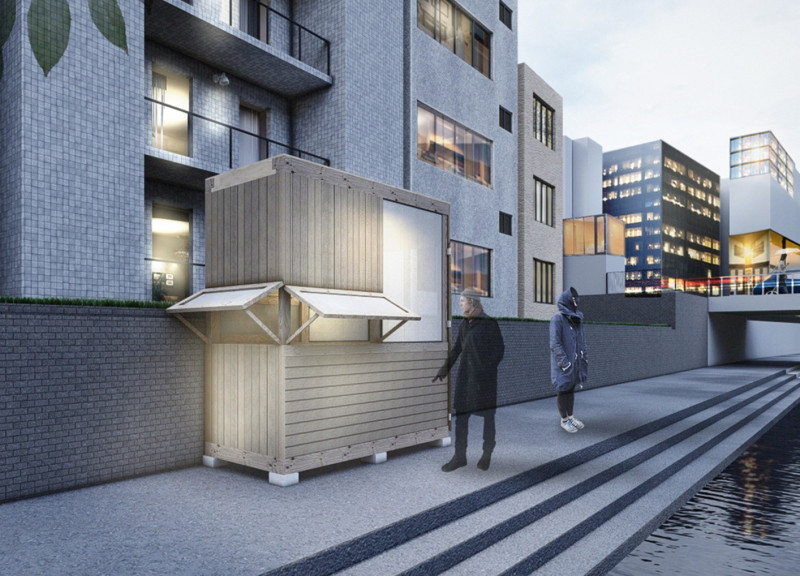5 key facts about this project
The meditation cabin concept is set against the backdrop of Tokyo, a bustling city known for its crowded streets and vibrant life. This design aims to create a quiet space for meditation that allows users to step away from the busy environment. Inspired by the Torii gate, the cabin serves as a threshold that connects the outside world with a space dedicated to personal reflection. It addresses the increasing demand for peaceful areas within the urban setting, providing a place where individuals can find solace.
Design Intent
The interior of the cabin is designed to be flexible, allowing for different types of meditation, such as walking, sitting, standing, and lying down. This flexibility is important as it allows users to choose their preferred way of engaging with the space. The layout balances openness with privacy, giving people the freedom to meditate without feeling exposed.
Light and Air Quality
A key feature of the design is its focus on light and air quality. The cabin includes traditional Japanese windows that can be opened to let in fresh air and natural light. This design aspect is essential in creating a calming atmosphere for meditation. The incorporation of polycarbonate material enhances the flow of light, helping to keep the space bright and inviting.
Urban Context
The project responds to the challenges posed by Tokyo's narrow streets. By carefully considering the size of the cabin, the design ensures that it does not disrupt the surrounding area. This mindful approach allows the meditation cabin to fit into the urban landscape without overwhelming it. The efficient use of space provides an essential retreat in a city filled with busy activity.
Consideration for Users
Further attention has been given to user needs with the inclusion of practical elements like hooks and electronic storage boxes. These features help reduce distractions and ensure that users can fully engage with their meditation. By considering everyday necessities, the cabin enhances the overall experience, making it easier for individuals to connect with themselves.
An inviting entrance leads into the cabin, marking the shift from the fast-paced city to a private space meant for reflection and calm.























